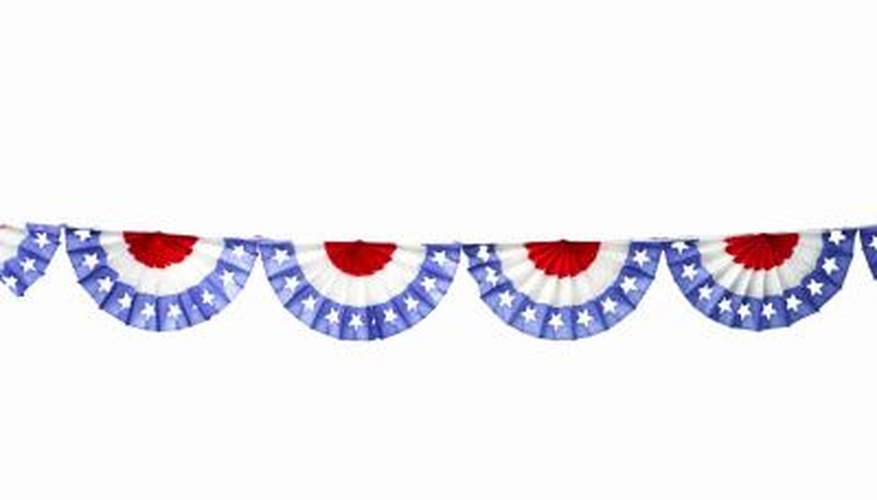Bunting is a decoration that can be made from any fabric. Originally, bunting was a term used for only wool, but today it is used to describe any decorative fabric. The two most familiar forms are triangle bunting and fan bunting. Triangle bunting has a line of triangle flags and fan bunting is a large semicircle shaped into a fan design. Properly storing bunting, when not in use, will keep the fabric looking fresh for many years.
- Bunting is a decoration that can be made from any fabric.
Fold the bunting carefully to avoid folding wrinkles into the fabric. This is especially important for fan bunting. Fold the pleats in fan bunting into the fabric and roll it into a tube shape. Fold triangle bunting in halves until it is a manageable size.
Place the folded bunting in plastic or wood storage boxes. If you use wood, line the box with acid-free paper. Leave some breathing room around the fabric. If you pack the fabric too tightly, it can encourage the growth of mildew and create a musty smell.
Place a few packets of silica gel inside the storage container to remove excess moisture from the bunting and keep it dry in all types of weather.
Add a few moth balls to the container if you plan to store the bunting for extended periods or in the attic. Moths, silverfish and other bugs love to nest inside soft fabric such as bunting, so bug prevention is a necessity to keep the bunting hole-free.
- Place the folded bunting in plastic or wood storage boxes.
- Add a few moth balls to the container if you plan to store the bunting for extended periods or in the attic.
Store the container in a dry, dark place. Inside a closet is ideal, or in the attic will work fine as long as you have taken precautions against bugs. Add a sachet of potpourri to the container for scent.
TIP
You can also use cardboard boxes to store bunting.
